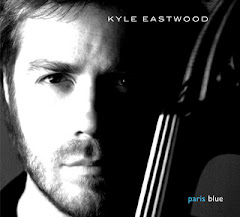Goals: Fill gaps in mother-of-pearl inlay; start restringing.
Music: Terry Gibbs Dream Band’s “Flying Home ”; Jimmy Giuffre’s “Free Fall
”; Jimmy Giuffre’s “Free Fall ”; Benny Goodman’s “1938 Carnegie Concert
”; Benny Goodman’s “1938 Carnegie Concert ”. (I’m skipping Dizzy Gillespie and one of my Gordon Goodwin’s Big Phat Band CD’s, because we have them in regular rotation on our “get ready to go to work in the morning” play set. I hear them a lot lately.)
”. (I’m skipping Dizzy Gillespie and one of my Gordon Goodwin’s Big Phat Band CD’s, because we have them in regular rotation on our “get ready to go to work in the morning” play set. I hear them a lot lately.)
When I took a look at the mother of pearl inlay, I had my doubts I would ever be able to get it to look like much of anything. I decided that since I still had some bare spots and still had some nice blanks, I could do with putting in a few more pieces, so that was what I did. Actually, I’ve gotten pretty good at it. You can almost tell which pieces I did first and which I did later just by looking at the quality of the work.
After putting in all the pieces I was going to put in, I grabbed my black inlay filler , and had at that. It was a mess going on, but after everything was dry, I was able to take a wet cloth and clean up the board quite nicely. When I took it out of the sun, it looked pretty good. Since I was on a bit of a roll, I decided to go ahead with the gold painting.
, and had at that. It was a mess going on, but after everything was dry, I was able to take a wet cloth and clean up the board quite nicely. When I took it out of the sun, it looked pretty good. Since I was on a bit of a roll, I decided to go ahead with the gold painting.
Fortunately for me, Mrs. S has been into oil painting lately, so she had a couple of very fine brushes that would work for the gold paint application. Unfortunately, the lines are so fine and require such a deft touch that I could hardly put any paint on the brush. Working outside in the sun, by the time I got the brush to the board, the paint had literally dried right on the brush. Putting enough paint on the brush to keep it wet long enough to get it to the board left a line that was too thick and clumsy looking. I had to give up on the painting. I’m going to have to come up with some other solution. (Gold marking pen, maybe?)
I spent the better part of the afternoon on Sunday working on the strings. My new, longer tuning pins arrived Saturday, along with some rubber baby buggy bumpers for the lid and a replacement lock also for the lid, so I didn’t have any excuse to put off that hard work any longer.
I tried a new method of stringing: I measure the two runs from pin to hole center, add four inches for winding around the pins, and cut the wire to length. Then I string the wire through one of the pins and drive it in. Then I do the other. Once I line up the wire and the felt, I tighten the outside pin until it has at least one coil of wire. Then I do the other pin. Check alignment, tighten, check alignment, tighten, and repeat until the wire is tight. Then I tap each wire and rough tune until they at least have the same tonality. This method turned out to be remarkably effective, as I have yet to end up with too much or too little wire. It still is brutally hard work, requiring concentration, strength, good eyes, patience, intuition, luck, and lots of bending. No wonder my back and neck are really feeling it today (especially my back – where’s my methocarbamol?)!
I’m finding out that in a lot of ways, pianos are designed to deter beginners from messing with them. For example, you have to start stringing from the toughest strings: the short, stiff, tinny sounding upper note wires. This is not to say that the bass strings are going to be any easier, but working with those short lengths of wire is tough. Now that I’ve got the majority of the high notes strung (something like an octave and three notes) I’m interested in seeing how the tuning pins and wires fare over time. Plus I can’t shake the feeling that I’m going something out of order and may have to start stringing all over again. (I just … don’t … know …)
Finally, I’m going to have to work on this sucker some evenings starting this week. This is dragging out too long and I’m afraid I won’t remember how to put everything back together. If I let it drag out much longer, I really will forget where everything goes and how to position it, and what not. Besides, I definitely need the keys back in to hear what the strings sound like.
It’s time to make a big push.










